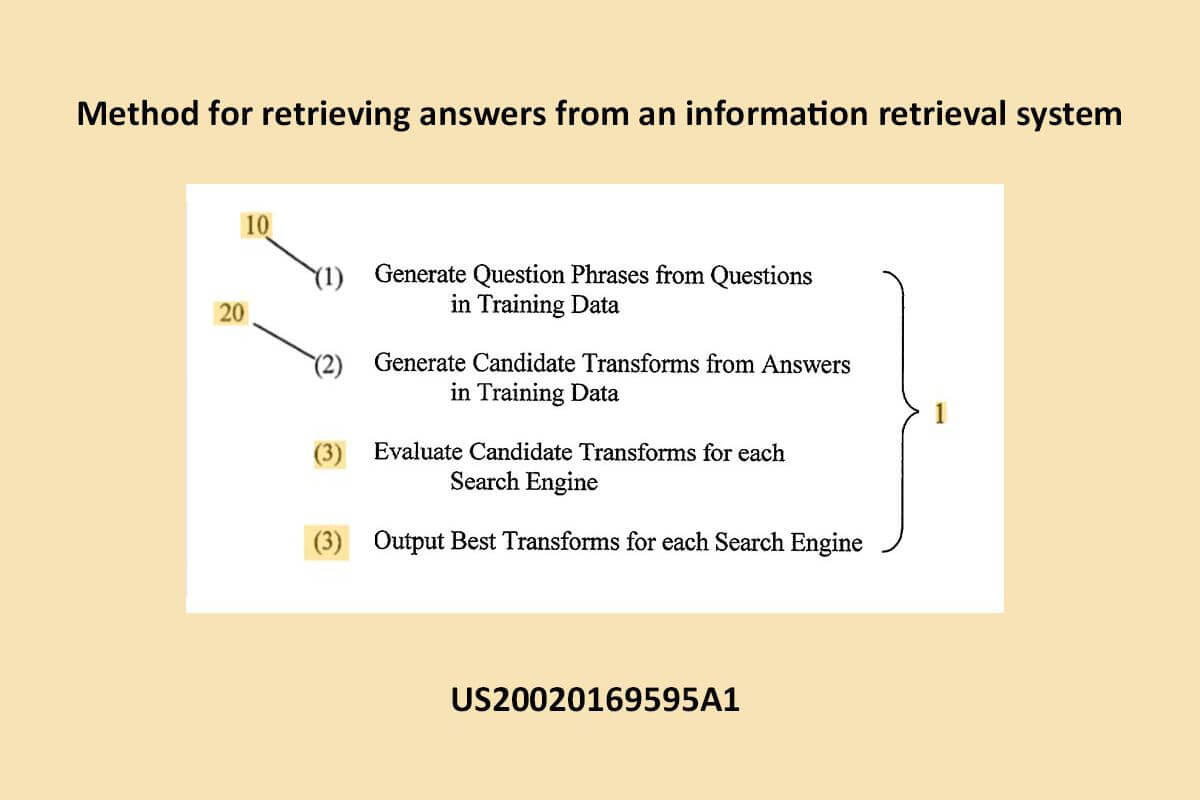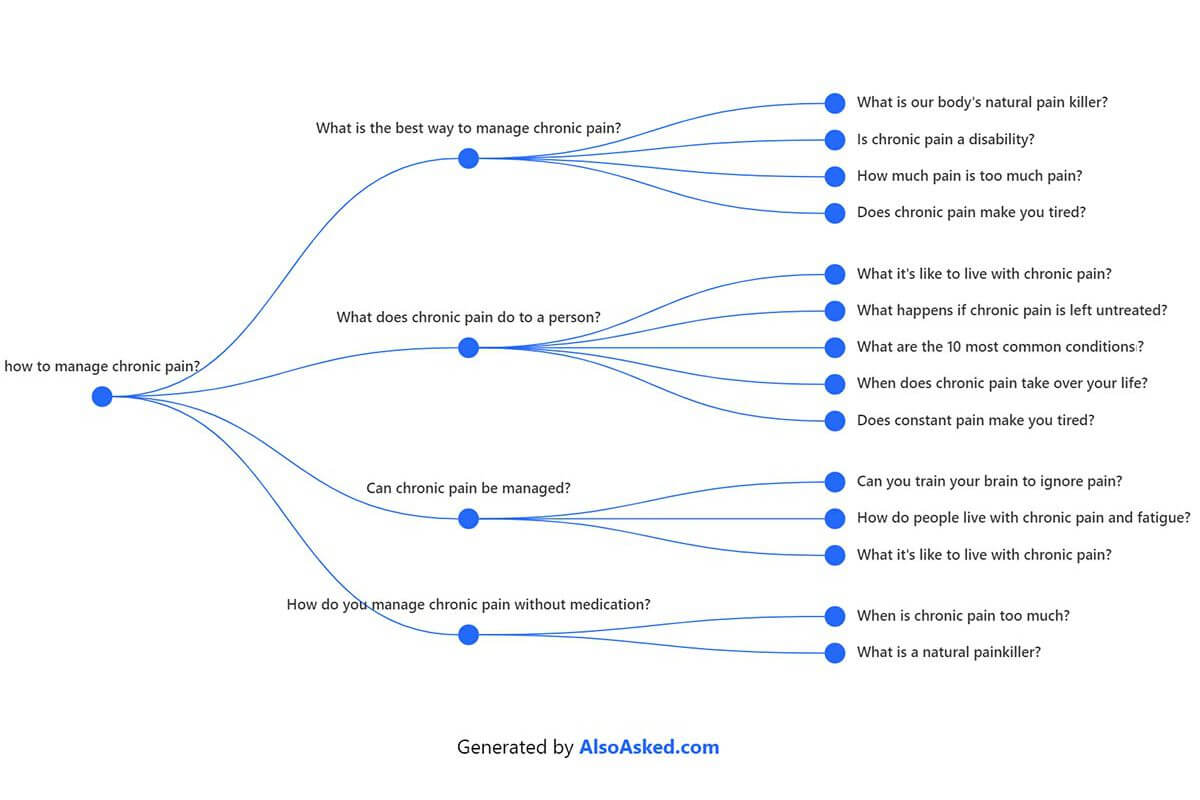How to Find Question Answer Content Gaps
Research for question-answering content creation relies on insights gained using effective FAQ retrieval and question matching.
You can then write for your audience. Dive into the research topics of effective FAQ retrieval and question-matching tasks with unsupervised knowledge injection. Together, they form a unique fingerprint of your brand’s knowledge. Making sure your website answers your audience’s burning questions is a solution-focused mindset. A large knowledge gap exists between the experts and the searchers for many queries. Once you find question-answer content that fills in knowledge gaps, your site becomes more valuable to users.
Finding the right questions to answer in an iterative flow through divergent marketing research helps inform content creation upfront. There are many sources that can give us clues as to what entities are important and related to your audience. Topic clusters can be created that incorporate answer-rich content. Your website should quickly identify your prospect’s top questions. Don’t leave them looking elsewhere for the expert who answers them.
Table of Contents
Leverage data synergy for connectedness to people’s questions.
Content pieces are often lost due to a lack of data synergy and disconnectedness to people’s questions that your business can answer. Consumers are asking great questions. Many do not have any or even one accurate answer in the search engines’ data repositories to use to display related queries.
Researching to discover the best question answer content starts with obtaining facts and assessing audience needs. You can then better answer those questions. Remember, your authors are competing with generative AI answers, as well as yourcompetitiors. Just like the buyer, without knowledge of what you don’t know you can’t make good decisions.
The key to good decision-making relies on early funnel research. It enables companies to discover different questions to answer that establish becoming consumers’ go-to source. By removing the unknowns in the purchase journey, you are assuring your audience that you understand their problems and provide solutions.
With a combined divergent and then convergent information collecting phase, knowledgeable decision-makers tap into important insights. This upfront marketing research is critical to making the best content creation decisions. It informs your content calendar so that you answer better questions and avoid the pitfalls of stagnant web pages.
How to Identify Important Questions Your Audience Is Asking
This is more important than ever as multiple new question-answer SERP types are emerging.
1. Conduct User Research
2. Understand FAQ Retrieval
3. Understand the q-A Relevance Measure
4. Use Deep Semantic QA Matching
5. Use Research Tools to Supplement your Ideas
6. List Questions by Priority
1. Conduct User Research

User testing is a type of user research that helps you identify your audience’s burning questions. You can then use this information to improve the value of your web pages in your audience’s eyes. To get the most from this research, it’s essential to know their top questions. A wrong set of questions can nullify the benefits of your usability research and lead content creators and product development down the wrong path. The right user experience testing comes up with questions that merit answer-rich content creation investment.
Keep conversations going with your current buyers and prospective audience.
Talk with other curious people, interview and brainstorm with them.
Remember the importance of diversity in Question Generation for QA. While you are seeking to reach a specific audience, demonstrate inclusiveness to all individuals asking those questions.
Research existing page headings to accommodate FAQ schema. Updated page headings for individual sections may convert statements into questions. Then answer the specific questions in the content directly beneath them for better context. If h2 and h3 headings are transformed into questions with applied FAQ schema you may gain visibility in People Also Ask Boxes and Related Questions or People Also Search For suggestions.
Whether you are starting out or revisiting FAQ schema, continually test whether your FAQ schema is answering evolving audience questions. It should improve your organic search performance and user engagement. Set up evaluations on both your product and informational pages.
2. Understand FAQ Retrieval
Observe how Google assesses information, perceives question answer entities, and serves the best query answer results.
Much of search engine results pages are dominated by Frequently asked question (FAQ) retrieval, with the intent of offering immediate answers to questions or concerns. The new Google Search Generative Experience provides a “Ask a follow up” question feature. These opportunities have vast applications in e-commerce services to assist the buyer along their journey to purchase.
Search engines catalog question-answer (Q-A) pairs to retrieve as an appropriate, trusted answer in response to a user’s query. They seek to manage FAQ retrieval typically by ranking question-answer pairs by determining either “the similarity between the query and a question (q-Q), the relevance between the query and the associated answer of a question (q-A), or combining the clues gathered from the q-Q similarity measure and the q-A relevance measure”. [1]
Sites that have established Expertise, Authoritativeness, and Trustworthiness (E-A-T) are more likely to be sources for questions that reoccur frequently.
The MUM algorithm expands BERT’s capabilities to capture the relevance between queries and answers. It is a more robust and high-performance FAQ retrieval method. It relies on the combined use of query-question similarity and query-answer relevance to be effective.
Research what answers are showing up, where, who are the featured snippet winners, and why did they win? Are the top answer results concise? Comprehensive? Answering all related questions in a single article? Or are they using long-form content that’s published in a series? Do the question formats include long-tail search queries? Review favored search patterns and let these insights instruct your QA strategy.
3. Understand the q-A Relevance Measure
By conducting research to find and combine clues gleaned from the q-Q similarity measure and the q-A relevance measure, you can create content that is written into a contextual language model for inferring the q-A relevance. QA systems help researchers identify a question in natural language and create a dataset of simple inter-related questions.
You can leverage domain-specific topically-relevant entity connections between words in an unsupervised manner, which can signal supervised domain-specific knowledge base information. Once you can assess topically-relevant relations between words, you gain a better q-A relevance measure.
“An effective approach to FAQ retrieval, which has at least three distinctive characteristics. First, both the q-Q similarity measure obtained by the Okapi BM25 method and the q-A relevance measure obtained by a BERT-based supervised method are linearly combined to rank Q-A pairs for better retrieval performance. On one hand, Okapi BM25 performs bag-of-word term matching between the query and a question, it can facilitate high-precision retrieval. On the other hand, since the BERT-based supervised method determines the relevance between the query and an answer based on context-aware semantic embeddings, which can model long-range dependency and get around the term-mismatch problem to some extent.” – [2]
4. Use Deep Semantic QA Matching
Traditional QA retrieval methods find similarities to measure a domain’s query-question distance. The key is to avoid extracting trivial “keywords” and replace them with high-quality retrieval results. The Universal Sentence Encoder for Question-Answer Retrieval enables search engines to process questions and candidate answer sentences independently. This also involves semantic meaning, mapping, and efficient document retrieval.
Most every business gets more and more dependent on marketing alignment across teams, increasing the demand for data sharing. As data and consumer questions evolve, shared knowledge environments do the best at making useful observations and creative thinking.
Many find the “unknown knowns” quadrant of consumer needs fascinating. If you gain tactical knowledge that is hard to articulate or even see, your observational research can uncover more important questions to answer. Purely mental work or guesswork is often affirmed and expanded with a better approach to curiosity and creative ways to unravel the searcher’s mind.
“Deep Semantic Matching is a crucial component in various natural language processing applications such as question and answering (QA), where an input query is compared to each candidate question in a QA corpus in terms of relevance. Measuring similarities between a query-question pair in an open domain scenario can be challenging due to diverse word tokens in the query question pair. We propose a keyword-attentive approach to improve deep semantic matching. We first leverage domain tags from a large corpus to generate a domain-enhanced keyword dictionary. Built upon BERT, we stack a keyword-attentive transformer layer to highlight the importance of keywords in the query-question pair.” – Cornell University [3]
Frequently Asked Questions (FAQs) consist of collections of question-answer pairs with the intent to solve the most common challenges that people searching online face. For example, if a business’s domain has a well-curated FAQ section, this may alleviate strain on your customer service team. When customers solving problems easily find answers, this use of neural search makes FAQ search more effective.
Build your FAQ dataset by leveraging semantic document search for domain keyword matching. This helps search intent matching to the right answer to the search query even if the searcher isn’t using the exact wording. In FAQ-question answering type, a Transformer-based sentence encoder compares a high-dimensional representation of your query to the encodings of the questions in the database. It sources the question with the closest similarity to your query entity and returns the answer to that question.
5. Use Tools that Assist in Question Answering Research

- Experience and Personal judgement: No tool is better than a skilled and passionate human mind. Products and services that emerge from understanding the need they fill, let you know what questions may be asked before the consumer thinks of them. Glean questions from your sales team, your frontline staff, internal collaborators questions, your chatbot, website comments, or your call center.
- Askey – SEO Questions Harvester: Retrieve user questions from Google Suggests and People Also Ask for free with this new Alexis tool. It supports English, French, German, Spanish, and Italian.
- Ahrefs Related Terms feature: It shows keyword ideas that have an entity relationship to a site’s seed keywords or phrases that you may otherwise miss. Compare estimated organic search traffic under related keywords. This helps identify phrases in question format. Ahrefs offers the ability to compare estimated organic traffic for multiple sites simultaneously.
- Semrush Keyword Magic Tool’s question filter: Use this to filter For Question Keywords or to modify using the Questions button. This button displays only search queries in the form of a question.
- RankRanger: Now combined with Similiarweb to discover Direct Answer Types.
- Google’s PAA feature: This Google Search feature displays which questions per niche and topic Google recognizes as commonly asked.
- Alsoasked.com: Input a question, brand or search query to obtain this platform’s cataloged insights into search intent with live, geo-specific “People Also Ask” questions.
- Google Search Console: It’s such a key tool that we’ve written more extensively about it below.
- Google’s Question Hub: Google says “Question Hub is a tool that enables creators to create richer content by leveraging unanswered questions. Question Hub collects these unanswered user questions and surfaces them to bloggers, writers, and content creators like you.” Question Hub is a newer tool that empowers content creators to publish richer content by leveraging unanswered questions.
- Keyword.io: Surfaces People Also Asked questions for each Google Search Term, making it an effective content marketing tool. Assists in research to identify what an audience is asking most often.
- Answer the Public: A search listening tool for SEO and content research. You can use it to find topics that your target audience is asking about. It provides data to decipher how easy or hard it will be to rank.
- Keywords Everywhere: When used in combination with other tools above, you can better plan out your content calendar to supply answers to questions your audience is asking.
- Twitter Tools: By conducting research using Twitter and other social media analytics, you can discover specific questions people are asking in your niche. Whenever you’re active in forums and in group feeds, note if a question surfaces and consider writing a post about it. Group participants are often happy to provide you with relevant information to use in your writings. Remember to cite them and provide a reference link.
- The Content Brief Generator: Mertazizoglu.com shows how to use Google Sheets with SERP-API support to uncover related queries for content creators. This assists in finding out what your audience is asking. [4]
- NLP Cloud’s Question Answering API: You can give a context and let the AI use this context to answer the question.
- Hugging Face Transformers and GPT-J: Question answering tasks return an answer given a question. Works well for extractive question-answering tasks like SQuAD.
- Use Surveys to Directly Ask your Audience: It may be so obvious, but there’s really no better source for great content ideas than asking your audience directly. Whether you reach out via a formal survey, email, social media, call them up, or via a website contact form, your audience will feel valued. We all appreciate it when someone takes the time to understand our needs and wants.
Using several of these tools helps increase chances of obtaining a Google Answer Box that answers the question a searcher types or speaks.
Use the Google Search Console to find Query Gaps
SEOs who are already familiar with Google’s tools will recognize why the Google Search Console is included above. Sites can benefit from Google Search Console data to learn about how your site is found and used in Google searches. Basics include how many impressions a site has received, how many clicks, and how click-through rate changes over a specified time.
For query answering, the Search Console reveals the specific queries that led people to your website. Evaluate these queries frequently to identify any queries for which you don’t currently answer in your content. Google is a leader in understanding users and permits a direct glimpse into the mind of your ideal audience.
Correctly identifying your audience’s core needs and the questions they ask is essential to the success of digital marketing campaigns. It takes time and a lot of targeted research, but when conducted skillfully, you can win an increase in engagement and conversions.
6. List Questions by Priority
While answering every possible related question is an ideal, for many niches, that is impossible or time and resouce challenged. Start by finding the priority of questions that offer the most value. Once your research has yielded your audience’s question list, order them in the priority that Google has set per query. It takes skill to use the above research tools to determine which are more and less-frequently searched queries.
Should I only answer questions with high keyword search volume?
Zero volume keywords (search query or search term) hold vast potential. They are often missed because SEOs are more familiar with keyword search volume. While it is useful for forecasting web traffic, it can place you in the hardest search demand curve to win for. Commonly used Keyword Volume may be something clients like when determining topics to write about, but it misses a whole sphere of opportunity.
Also, consider what answers to write for based on what it will take to remain relevant and at the top. Avoid things short-term QA needs like “Who won the 2020 presidential election?” It only requires a short answer and has little value once the event is past. Rather, something like, “What is the process for Congress to override a presidential veto?” will allow you to demonstrate more useful knowledge.
Why answer lesser, related questions?
This is how search engines understand what your main term is about. You can dive into individual pages and individual queries. Figure out what is dropping or increasing on a page level and build out your expertise. A lot of published content is okay, but search engines have to make a cut somewhere. So make your content valuable; it’s expensive to produce content. Lesser related QA can support your evergreen sales funnel and product pages.
Major shift from focussing on keyword rankings and search volume to topical rankings for question answering content.
Because search engines care about searchers’ needs, the questions people ask online shape their personalized Knowledge Graph Panels results. This demonstrates how the transition to Google being an answer engine is also a “fluid search engine”.
Google has stated that “You Don’t Need To Be An Authority To Rank”. Its question answering patents indicate a machine learning process that is a hermeneutic circle; this is different from a human person being in the process. Whatever patent it is currently using we don’t know for sure, but it is clear that the tech giant is dedicated to providing searchers with trusted, accurate answers.
More About QA Content Research
What is Knowledge Graph Question Answering (KGQA)?
KGQA systems convert a natural language question into a query to a particular Knowledge Graph, allowing the user to access “knowledge” without needed to understand a query language (like SPARQL). Multilingual accessibility challenges are overcome in part using a structured form when presenting question answers, which is also helped by schema.org markup. Within constructed knowledge graphs, the expansion to additional languages can occur with less effort, since concepts and things are processed in their core instead of simple terms and strings.
When using semantic parsing, a question is broken into its fundamental components, such as, entities, relations, classes, etc., to infer a more complete interpretation of the question. This interpretation is then used to retrieve the answer from the knowledge graph.
The future of question-answering systems is in influencing knowledge graphs to make them smarter.
Does Adding FAQ Schema Boost SEO Performance?
Yes. In our experience, it does most of the time. You need to evaluate your industry uniquely from the general pool of FAQ Schema results. We’ve gained good returns from including Question Answer format on identified web pages – even across different niches. In some cases, by converting page headers into questions, responding immediately with answers, and implementing FAQ schema, the benefits were well worth the effort.
How to conduct SEO split tests to determine QA effectiveness?
In our experience the most important thing is good documentation on controlled experiments and by eliminating other influencing factors:
- By documenting in performance of test pages in relation to the control, we can deduce that a measured impact wasn’t influenced by algorithms, the competition, seasonal adjustments, sitewide updates, or other recognizable external factors.
- Using a statistical analysis helps us predict actual outcomes and make strategic plans for creating more lift in future SEO campaigns.
- We document impacts on organic web traffic and visibility in Google-owned SERPs in order to assess rankings fluctuations to clickthrough rate.
How to provide data-driven answers for omnichannel success?
Whenever you’re active in forums and in group feeds, note if a question surfaces and consider writing a post about it. Group participants are often happy to provide you with relevant information to use in your writings. Remember to cite them and provide a reference link.
An ideal customer experience allows customers to move easily from channel to channel without losing their place or the informational data they’ve entered. To successfully deliver these solutions, brands need to overcome mediocre content challenges with ambitious strategies and first-rate technology.
Deliver omnichannel, real-time question-answer interactions to your customer’s daily conversations and on their preferred channel. Embrace question answering technologies to improve your current content creation capabilities and shape both your global brand answers and on-site search.
Another great way is to answer your customers’ top questions in your Google Business Profile.
“Open Domain Question Answering: A core goal in artificial intelligence is to build systems that can read the web, and then answer complex questions about any topic. These question-answering (QA) systems could have a big impact on the way that we access information. Furthermore, open-domain question answering is a benchmark task in the development of Artificial Intelligence, since understanding text and being able to answer questions about it is something that we generally associate with intelligence.” – Natural Questions: A Benchmark for Question Answering Research – Google AI
“Google is about answers. Marketers have to focus on offering unique value for objective queries. The key will be to focus on content that has original value – such as original reviews, unique data or insight.” – Matt Cutts
Audit existing content to identify content gaps to help reach your target audience.
Set up your QA metrics. You may discover content gaps in a sequence that disclose an opportunity to gain a better-answered questions result set. Question-answering (QA) models sometimes need to retrieve information from tables, such as data from SQL Server databases.
Question Answering systems have many use cases to help you reach your target audience. You can write content to better respond to customers’ queries by reading through your company’s documents and finding a perfect answer. Google’s tools help you learn how to improve your FAQ content.
Showing up in immediate search engine result pages with answers can increase your organic share of voice. Research to help you find Question Answer content gaps can help you answer the question in a clear, concise, authoritative way. Creating content with this market research approach will provide a better user experience overall.
The Future of Visual Question Answering
Providing answers will remain central to Google Search. Google IO 2022 announced its recent launch of multisearch in the Google app, which lets you search by taking a photo and asking a question simultaneously. It stated that later in 2022, you’ll be able to take a picture or screenshot and add “near me” to get local answer results. Start your question-answering research now to be the first expert with answers to show up.
“Visual Question Answering (VQA) has benefited from increasingly sophisticated models, but has not enjoyed the same level of engagement in terms of data creation. In this paper, we propose a method that automatically derives VQA examples at volume, by leveraging the abundance of existing image-caption annotations combined with neural models for textual question generation. We show that the resulting data is of high-quality. VQA models trained on our data improve state-of-the-art zero-shot accuracy by double digits and achieve a level of robustness that lacks in the same model trained on human-annotated VQA data”, according to Google Research *
Could rich machine-readable information be refined for a variety of purposes? The future is rich with promise that we can find and answer our audience’s key questions better.
Conclusion: Create Question Answer Content your Audience Wants
Providing answers will remain central to Google Search. Google IO 2022 announced its recent launch of multisearch in the Google app, which lets you search by taking a photo and asking a question simultaneously. It stated that later in 2022, you’ll be able to take a picture or screenshot and add “near me” to get local answer results. Start your question-answering research now to be the first expert with answers to show up.
Always remember the quality side of content creation and the value of providing a better overall user experience. Solid marketing alignment across teams will help any business publish better content.
Call Hill Web Marketing at 651-206-2410 to Conduct a schema audit to boost QA Content.
Resources
[1] https://link.springer.com/chapter/10.1007/978-3-030-83527-9_11 and https://research.google/pubs/pub51365/
[2] https://arxiv.org/ftp/arxiv/papers/2010/2010.14049.pdf
[3] https://arxiv.org/abs/2003.11516
[4] https://docs.google.com/spreadsheets/d/16bhJfyXsE1TMso1JhwbtwIJ7AR9ApgBIG1sWpZS5OiQ/
